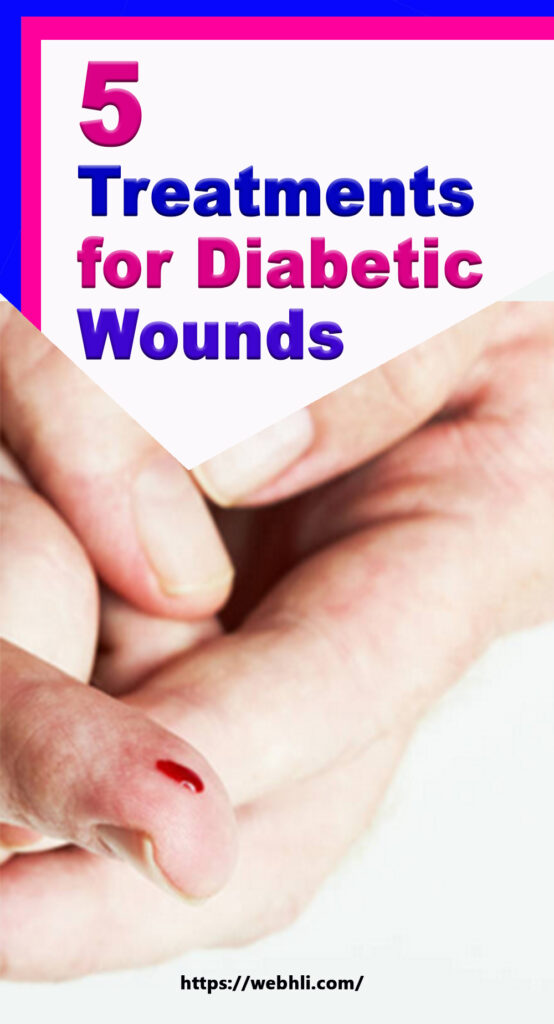
Diabetic wounds can be difficult to treat and heal slowly. If left untreated, they can become life threatening. Unfortunately some fifteen percent of diabetics will develop open sores on their body, mostly on their lower legs and feet. African Americans, Native Americans, Hispanics and older men are more likely to develop wounds. Anyone who has had diabetes related to eye, kidney or heart disease will also have higher risks for the development of wounds.
Check out these related articles, too:
Deliciously Simple Breakfast Ideas for Diabetics
Diabetes and the Paleolithic Diet
Skin Problems Connected to Diabetes
What is the biggest contributor to diabetes?
Diabetes and Higher Than Normal Fasting Blood Sugar Levels
How to Lower Blood Sugar Naturally
Using a Diabetic Blood Sugar Level Chart How to Know If You're in a Normal
The best treatment is preventative. That may not always be possible as accidents happen. Good treatment for diabetic wounds is important so start treatment as soon as possible. If you develop a wound, there are a number of options to heal it as fast as possible. Your doctor will offer and perform necessary procedures such as debridment and offloading. You will generally have some leeway in dressings and other care.
1. Topical Anti-Microbial Ointments.
While not recommended for deep or severely infected wounds, topical treatments are always a first line of defense as a treatment for diabetic wounds. First, clean the wound carefully. Remove any loose material or debris. Rinse well with hydrogen peroxide. Pat it dry with a sterile pad. Be sure to use the correct kind of ointment for your wound! A dry wound is best treated with a petroleum based ointment. The jelly helps to keep the skin supple while the active ingredients protect against infection. If your wound is weeping, oozing or simply moist, use an antiseptic foam. This product allows the fluid to drain properly. Sometimes you discover a wound and cannot go to the doctor's for a few days. Using a topical ointment is best until you can see your doctor.
2. Honey.
Doctors for over twenty years have used honey or white sugar as a treatment for slow to heal wounds. While it may seem odd, it is effective. It is also safe for diabetics as the sugar does not enter the blood stream through the wound. The sugar will help to draw out wound fluids, relieving swelling. When sugar or honey is packed into and on a wound, it dissolves into wound fluids. This creates a super saturated solution in which infectious bacteria can survive. The wound will heal cleanly, and often with no scarring. To use honey or sugar you will need a four by four inch strip of gauze, Vaseline and a four by four inch sponge as well as bandaging. Coat the gauze in Vaseline and use it to create a well around the wound. Pack medical honey or sugar into the wound covering it with at least a quarter inch of sugar. Place the sponge over the wound and bandage comfortably. Rinse with saline and change every other day.
3. Silver.
This old treatment has found new life in the treatment of antibiotic resistant bacteria. Silver compounds come in three basic formulations. There are metallic compounds, nano-crystalline compounds and finally, ionic formulations. The choice of compound is not as important. They all have broad anti-bacteria effects. They are even known to be effective against MERSA and other difficult to treat pathogens. The silver ions work by damaging the bacterial cell walls and membranes, respiratory systems and ribonucleoprotiens. Unfortunately, the silver treatments must be reapplied often as the effective action is short-lived in the wound. To use silver, clean and dry the wound. Use a silver impregnated dressing pad or ointment. Bandage carefully and change daily.
4. Proper Nutrition.
It can be hard to get in all the necessary nutrients as a diabetic. But it is extremely important to get the recommended levels of certain nutrients to promote healing. A healthy adult requires 1.25 to 1.5 grams of protein and 30 to 35 calories per kilogram of body weight. This amount can nearly double if they have a large bodily wound. It is believed that some 25 percent of hospitalized patients are protein deficient. There are also several vitamins and minerals to consider. Vitamin A deficiency will slow new tissue formation. A lack in Vitamin C will slow collagen formation. A lack in Vitamin E will lead to scar formation. Low zinc levels will severely slow the formation of new cells and the healing process. An improved diet or daily multi-vitamin will not aggressively target an active infection. What it will do it help speed healing from within and help prevent new wounds from forming.
5. Pain Management.
Long lasting diabetic wound may be painful or uncomfortable. A complete plan for treatment for diabetic wounds will include a safe and easy way to manage the pain of the wound. A topical pain medication can be applied exactly where it will do the most good. Ask your doctor about a prescription grade topical pain cream. Most over the counter creams are not designed for use near open wounds. Many oral pain medications have undesirable side effects or can interfere in the treatment of your infection. A pain cream carries low risk of interaction, organ damage or other side effects.
Copyright (c) 2014 Complete Healthcare Solutions
About the Author: T.J. Palmieri is a Sports Enthusiast and Heath and Wellness Advisor with Complete Healthcare Solutions in Tamarac FL. For more information on Topical Pain Creams for Diabetic Sores and how You can obtain a 100% Free Prescription through you Insurance provider, visit: [http://www.freetopicalpaincream.com/]
Article Source: http://EzineArticles.com/8570762

 Protected by Patchstack
Protected by Patchstack